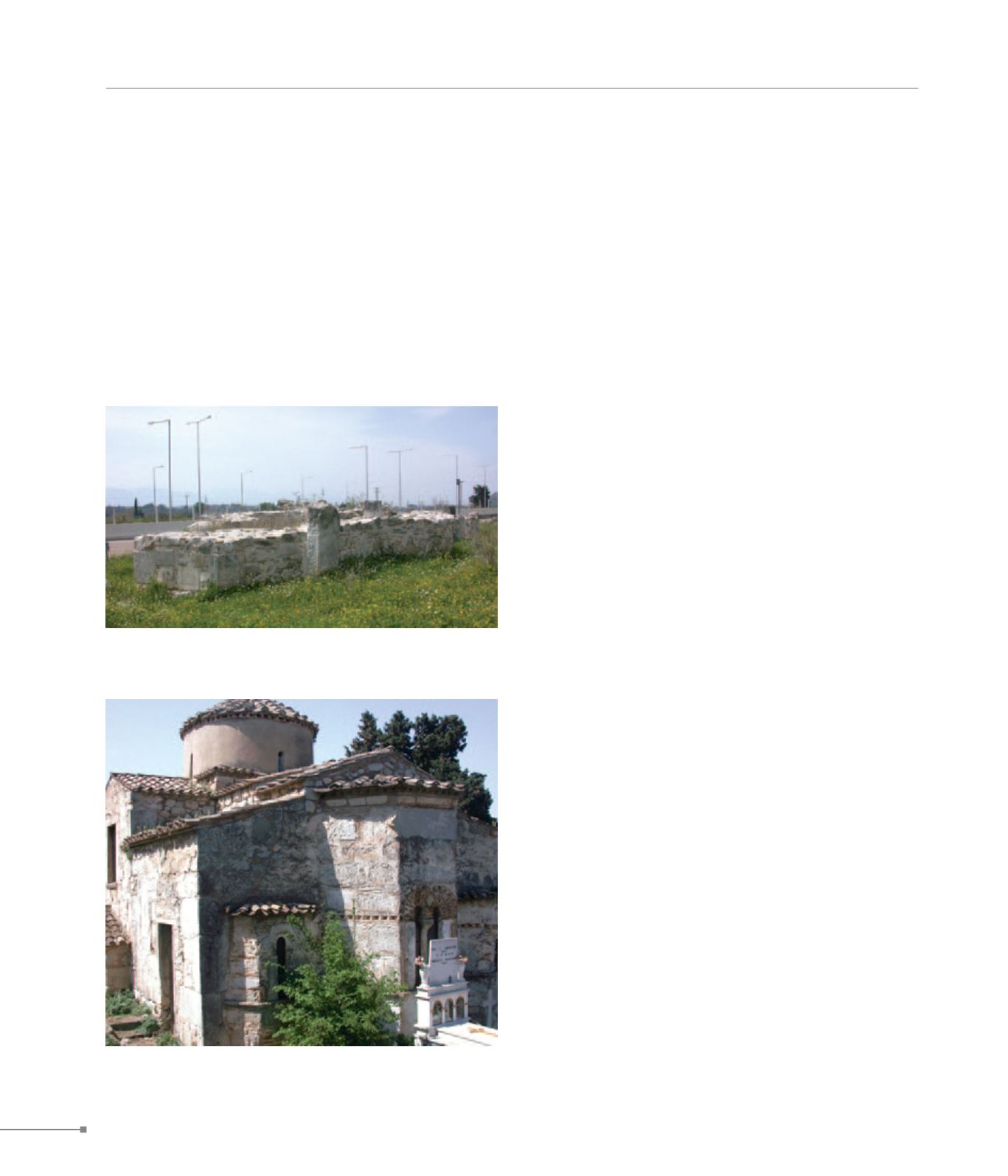
Cave Church of Saint George.
Anthedon.
CENTRAL GREECE
184
218. Acraephnio, Saint George (Ακραίφνιο, Άγιος Γεώργιος)
218. Acraephnio, Agios Vasileios (Ακραίφνιο, Άγιος Βασίλειος)
ated with the Byzantine triconch church of Aghios Vasileios,
dating from the 10th-11th c., excavated nearby. In 1311 the
Frankish feudal lord Antonio de Flama established the church
of Saint George, a gift of gratitude for surviving the battle be-
tween Franks and Catalans in Almyros, as indicated by an in-
scription on the wall. It is a four-columned, cross-in-square
church with narthex added later. A plethora of ancient spolia
from the acropolis has been used in the masonry. In the inte-
rior, traces of wall-paintings (14th and 16th c.) survive.
219.
Cave Church of Saint George.
In the rocky hills, on the right side of the road connecting Aliar-
tos with Acraephnio, is a cave that was transformed into the
church of Saint George or of Zoodochos Pege in 1333 during
Catalan rule.
220.
Yliki.
A Frankish tower near the Klimataria promontory at Lake Yliki
was visible until the 19th c., but was covered when the water
level rose after the draining of Lake Kopais. Its upper part is
visible only at times of great drought.
221.
Paralimni.
A Frankish tower also survives at the NE edge of Paralimni,
built on the site of an ancient acropolis with traces of inhabita-
tion going back to prehistoric times. It survives at a height of 6
m. On the SE side of the hill are the remains of a small Byzan-
tine tetraconch. At the NE edge of the lake a large basilica has
been discovered, among other finds.
222.
Anthedon.
Coastal town of the Euboean Gulf, on a small plain NW of
Mount Messapion, and inhabited from the Archaic period until
late antiquity. It features a fortified acropolis on a low hill, and a
port. Anthedon, along with Delion, was a significant commer-
cial port in Boeotia during late antiquity and was in use until
the 12th c. The surviving port facilities, mole and breakwater,
are included in Justinian’s defensive works dating after 540.
Traces of stoic buildings, and the foundations of a three-aisled
basilica with narthex, retaining a mosaic floor of the 5th c.,
have been detected at the port. According to historical evi-
dence, the coastal settlement was inhabited until the 7th-8th c.


